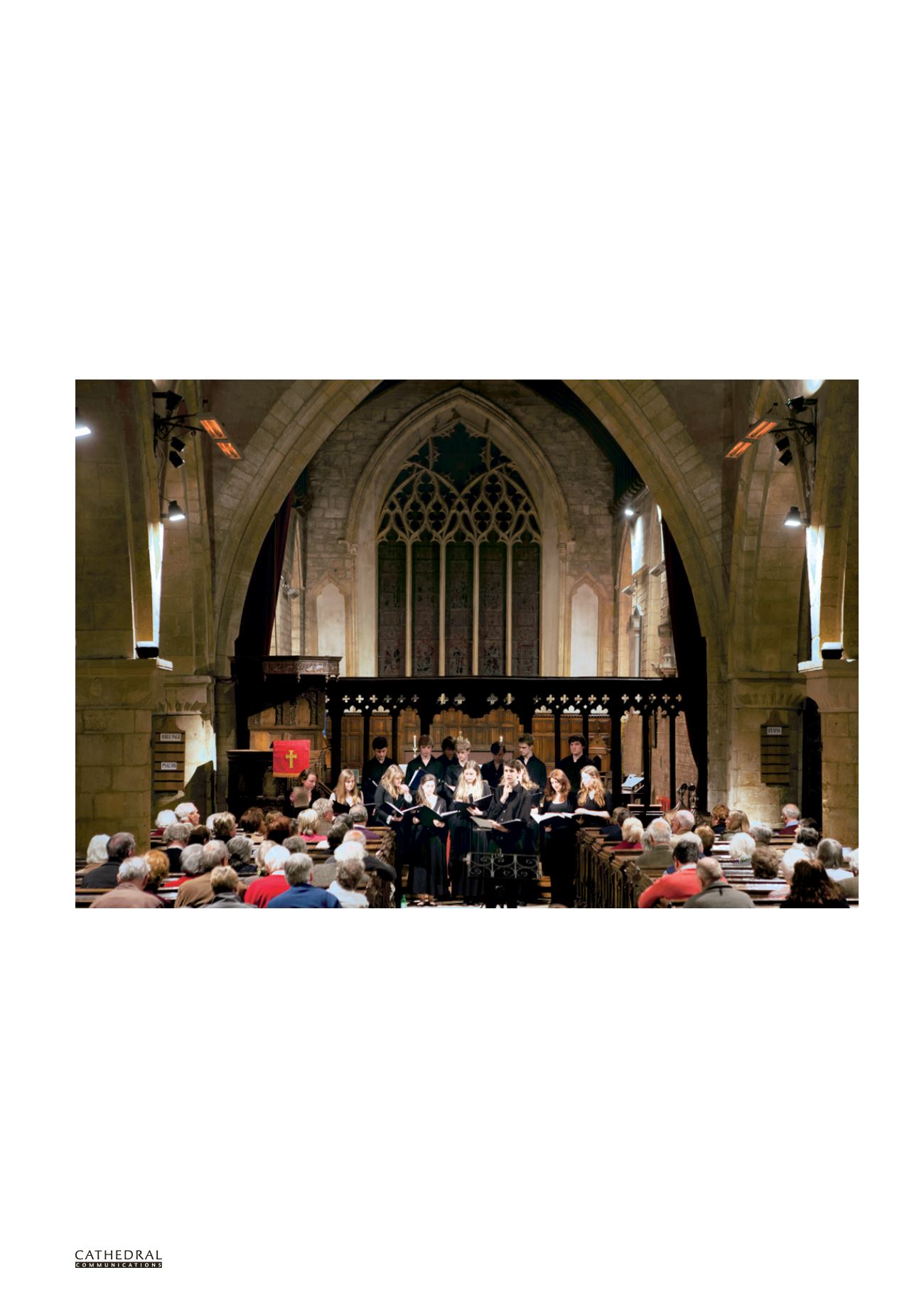

BCD SPECIAL REPORT ON
HISTORIC CHURCHES
24
TH ANNUAL EDITION
3
SACRED SPACE
and COMMUNITY
John Inge, Bishop of Worcester
T
HE CHURCH of England is
responsible for 15,700 parish
churches, 78 per cent of which
are listed. Among them are 45 per cent
of all Grade I listed buildings in England.
Together with our cathedrals, parish
churches are surely the jewel in the crown
of England’s built heritage. Over 57 per
cent of Church of England churches are
in rural areas and their physical presence
enriches our landscape immeasurably.
The collective importance of these
buildings as part of our heritage is
immense but their significance is much
broader than their architecture. Most
of them still serve their communities
in all sorts of ways. Rural churches are
often the only ‘public’ buildings left in
villages. The number of people attending
them on any given Sunday might not be
large – nationally, a quarter of the 15,700
churches have weekly attendances below
16 and further analysis indicates that
around 2,000 have a weekly attendance
below ten. However, a glance at the
registers of many such churches will
show that they did not have very much
larger congregations in past generations.
This does not mean that they have
not, and are not, valued by their
communities. They are, rather, much
loved and used in all sorts of ways. As
the Church Heritage Forum’s
Building
Faith in our Future
report (2004) put it,
churches are:
a major contributor to social
capital, providing a physical
base where people can meet
and be supported, practically,
emotionally and spiritually –
expressing the church’s unending
concern to recognise all humanity
as neighbours. Day in, day out,
church buildings host groups
of all types and all age ranges,
A concert at St John the Baptist, Tredington, Gloucestershire (Photo: James Kerr/Archbishops’ Council)


















